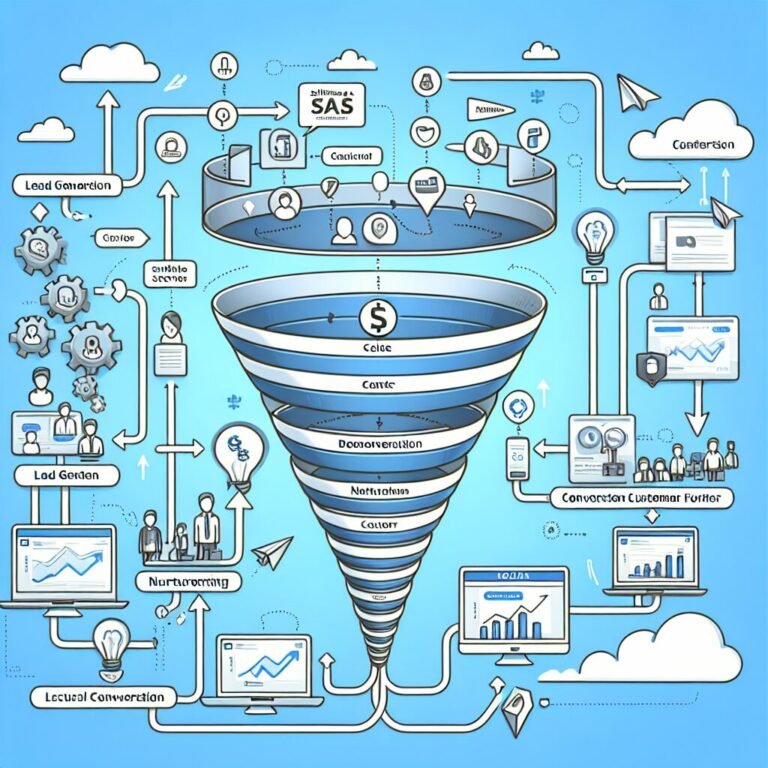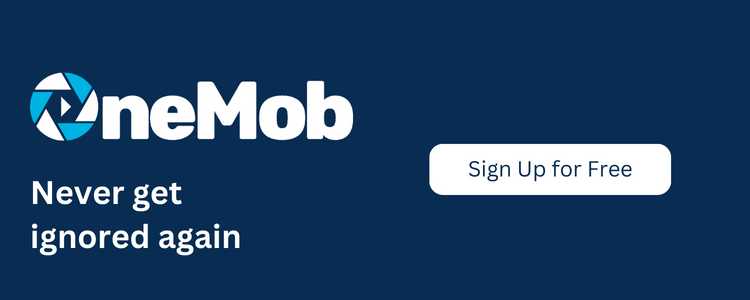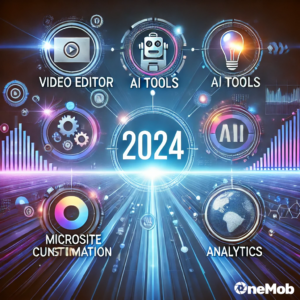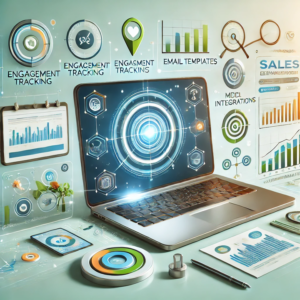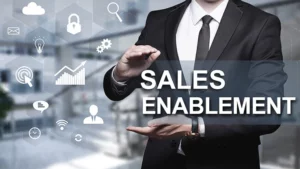Understanding SaaS Sales Funnel: The Basics and Beyond
The world of SaaS (Software as a Service) is a dynamic and ever-evolving ecosystem. At the heart of this environment lies a crucial element for business growth—the SaaS sales funnel. While most sales models are based on traditional practices, the SaaS industry operates a little differently, and this manifests most clearly in its sales funnel.
Defining the SaaS Sales Funnel
A SaaS sales funnel is a strategic framework which outlines the journey of potential customers from their initial interaction with your product or service, right through to becoming a paying customer. Compared to a standard sales funnel, a SaaS sales funnel often incorporates additional factors such as free trials, onboarding, and user retention. The secret to a successful funnel? Creating engaging, interactive, and personalized experiences—something that OneMob excels at, enabling SDRs and sellers to easily craft no-code microsites that captivate and convert.
Relevance of the Sales Funnel in the SaaS Industry
The fascination with sales funnels in the SaaS industry isn’t mere hype—it’s a vital component for success. In SaaS, customer acquisition is an ongoing process, not a one-time transaction. The funnel enables businesses to measure their efforts at every step, identify leaks, and devise strategies to improve conversion and minimize churn. Moreover, given that SaaS companies typically depend on recurring revenue models, nurturing long-term relationships with customers is essential—and these relationships are often built within the stages of the funnel.
Key Elements of a SaaS Sales Funnel
The SaaS sales funnel breaks down into several key stages, each with its specific characteristics and goals:
- Awareness: At this stage, prospects are discovering your brand and product. Here, critical outreach activities like content marketing, social media marketing, and SEO come into play.
- Interest: Prospects are considering your software as a potential solution. Tailored email campaigns or personalized microsites created with a tool like OneMob can be effective here.
- Decision: At this stage, prospects are comparing your solution to competitors. This is where you need to highlight your USPs and offer value-added services like demos or consultations.
- Action: Prospects have decided to use your software and become paying customers, often starting with a free trial or a freemium model.
- Retention: This post-conversion stage involves making sure customers are satisfied with their experience and turning them into repeat customers and brand advocates.
Understanding Top, Middle, and Bottom of a SaaS Sales Funnel
The SaaS sales funnel is conventionally divided into three parts: the top (TOFU, or Top Of the Funnel), middle (MOFU), and bottom (BOFU). The TOFU corresponds to the Awareness stage, where customers first encounter your brand or product. MOFU includes the Interest and Decision stages, where potential customers evaluate your product against their needs and other market offerings. Finally, BOFU encapsulates the Action and Retention stages, where customers admit to the value proposition of your product and become loyal, long-term users.
Across this funnel, strategies, tactics, and tools—like those offered by OneMob—should change to meet prospects where they are and guide them towards conversion. From initial awareness through an engaging microsite to ongoing user retention with personalized messaging, sellers need to adapt their approaches based on where a prospect is situated within the funnel.
Lead Generation and Management in the SaaS Sales Funnel
After establishing a comprehensive understanding of the SaaS sales funnel, its relevance, and the key elements at play, let’s now delve deeper into one of the crucial aspects of the process – Lead Generation and Management. These are the fuel that drives the engine of the SaaS sales funnel. Without well-nurtured leads, the funnel itself would cease to function.
Strategies for Effective Lead Generation
Lead Generation in SaaS can be challenging due to the unique nuances of the industry. The most effective lead generation strategies emphasize creating customer-centered content, practicing proactive SEO, using the freemium model, and driving referrals. One of the less known strategies is the utilization of microsite creation tools like OneMob, which can drastically enhance lead generation by making outreach more personalized and engaging.
The Importance of Lead Scoring in SaaS Sales Funnel
One lesser-known, yet crucial factor that can dramatically improve SaaS sales is Lead Scoring. It is an underutilized strategy that ranks prospects on a scale, identifying the leads more likely to convert. What makes it instrumental in the SaaS context is the potentially long sales cycles, where it becomes critical to prioritize leads. Another key detail is the use of technology-powered predictive scoring, which leverages AI to predict the likelihood of leads becoming customers.
Techniques for Successful Lead Nurturing
It’s a common misconception that lead nurturing only involves follow-up emails. However, successful lead nurturing involves meticulously guiding the prospective customer through the sales funnel, providing them with valuable content and personalized engagement. Video messaging and personalized microsites, as facilitated by OneMob, are exemplary techniques for making this nurturing process more engaging and effective.
Role of CRM Tools in Lead Management
Last but not least, the proper use of Customer Relationship Management (CRM) tools plays a pivotal role in managing leads effectively. These tools not only organize and streamline the sales process but also provide critical customer data and insights to fine-tune your sales strategies. A crucial but often overlooked aspect is to integrate your CRM with other sales tools. For instance, OneMob can be linked to your mailbox, harmoniously blending email marketing with lead management for better conversion rates and higher revenue.
Optimizing Conversion in the SaaS Sales Funnel
In the context of SaaS, conversion refers not only to the traditional definition of turning leads into customers but also to the transformation of free or basic tier users into paying customers or upgrades from a lower pricing tier to a higher one. Therefore, conversion in SaaS often implies up-selling and cross-selling.
Understanding the Major Challenges to Conversion
High churn rates, lack of customer engagement, and low retention rates are major challenges to conversion in the SaaS model. The ephemeral nature of software subscription services makes customer loyalty not only hard to achieve but also crucial to business success. Moreover, the overabundance of alternatives in the market adds to the challenge.
Strategies to Overcome Conversion Obstacles
The first part of overcoming conversion obstacles involves creating an engaging and user-friendly product. This includes an intuitive user interface, features that provide real value, and effective customer support. Personalization is another essential strategy. Through products like OneMob, you can create individualized engagement experiences for your leads, enhancing their connection with your product and improving conversion chances.
| Strategy | Purpose |
|---|---|
| Regular follow-ups | To keep the leads engaged and remind them of your product’s value. |
| Exclusive offers | Designed to intrigue and lure leads into becoming paying customers |
| Customer testimonials | Proof of satisfaction from previous customers to instill trust in leads. |
Role of Customer Journey Mapping in Improving Conversion
Customer journey maps provide a visual representation of your customers’ interactions with your brand. It helps you understand their experiences and pain points better, and in turn, allows you to tailor your strategies effectively. Using a customer journey map, you can identify areas in your sales funnel where leads are dropping off and focus your efforts on optimizing these stages.
How can I identify areas in the sales funnel that needs optimization?
Tools like engagement analytics and customer journey mapping can identify potential areas of improvement. It’s essential to closely track and analyze your lead behavior and make data-driven decisions.
What are some conversion optimization techniques?
Some conversion optimization techniques include A/B testing, customer feedback surveys, user interface improvements, offering free trials, and personalizing communication.

